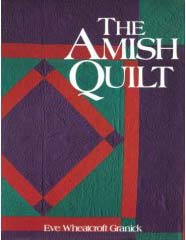 Several years ago, I was working on a baby quilt from a book of designs inspired by Amish quilts. The pattern I was using included an applique border which I was going to skip because my hand stitches look awful. I was intrigued by a note that the author had included, though, about how traditional Amish quilts rarely include applique. The technique of applique was believed to be wasteful of fabric.
Several years ago, I was working on a baby quilt from a book of designs inspired by Amish quilts. The pattern I was using included an applique border which I was going to skip because my hand stitches look awful. I was intrigued by a note that the author had included, though, about how traditional Amish quilts rarely include applique. The technique of applique was believed to be wasteful of fabric.
It turns out that wise use of resources is a hallmark of Amish quilts even beyond avoidance of applique. The Quilter’s Ultimate Visual Guide has this to say about Amish quilts:
Most quilts contain bits of fabric left over after dresses and shirts have been made for the family […] Mitered borders are rarely used, since they require more fabric. In keeping true to their faith, the quilts the Amish make are simple in design and fulfill a utilitarian need of providing warmth.
All of the quilters I know keep a collection of fabric scraps and leftovers that we are just positive we are going to use someday. Throwing away a bit of fabric is tough, even when it’s only 1 inch by 1 inch. (Hey, there’s always miniature paper piecing.) We also plan before we cut and we cut carefully so we don’t use any more of the fabric than we have to. It’s expensive, and we want to have some left to use for other projects if we can.
The Amish, however, take this to another level. How many quilters have actually sworn off particular techniques because they are too resource-intensive? How many crafters have sworn off new materials, only using leftovers from other activities? For example, we like to think that t-shirt quilts are a great recycling project. But for every t-shirt quilt that keeps part of a shirt out of a landfill, we throw part of each shirt away and then use fusible web, batting, and a backing fabric to finish the quilt. I don’t think the Amish would be terribly impressed.
The Amish commitment to their way of life is motivated by religion and not just by environmental concerns, but their example does make me stop and think. They aren’t consuming their way to a greener world. They’re deliberately limiting their consumption.
They aren’t doing without beauty, though. If all they wanted was to keep warm, they wouldn’t have to piece the quilt top at all. Looking at their quilts makes me think of folks who fear going green because they don’t want to sacrifice style, beauty, or comfort. Collectors Stephen and Faith Brown have been generous enough to create an online gallery of some of the Amish quilts in their collection. When you look at a quilt in that gallery, do you miss the mitered border?
The authoritative work on these quilts is The Amish Quilt by Eve Wheatcroft Granick, the cover of which is pictured above. I’m looking forward to reading it and learning more about this green quilting tradition.
Related Posts:
- Top 5 Quilting Ideas for “Use What You Have” Month
- What Can You Do With Jeans?
- Winter Woolies, featuring an artist’s reponse to waste in the garment industry


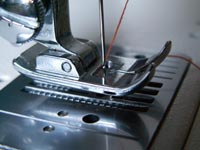

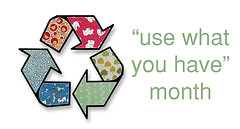
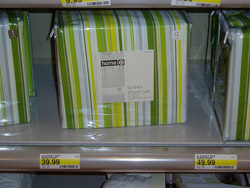
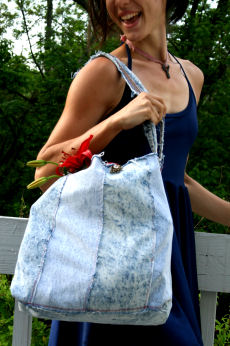
Very interesting. I am sure we could learn quite a bit from the Amish regarding limitations of resources. The Amish way of life is definitely more simple than our typical way of living.
Very interesting. I am sure we could learn quite a bit from the Amish regarding limitations of resources. The Amish way of life is definitely more simple than our typical way of living.
Very interesting. I am sure we could learn quite a bit from the Amish regarding limitations of resources. The Amish way of life is definitely more simple than our typical way of living.
Very interesting. I am sure we could learn quite a bit from the Amish regarding limitations of resources. The Amish way of life is definitely more simple than our typical way of living.
In a recession, it’s even more important to utilize what is around us. I bought a memory quilt kit instead of throwing tshirts away. Turned out amazing and I feel good about doing it too!
In a recession, it’s even more important to utilize what is around us. I bought a memory quilt kit instead of throwing tshirts away. Turned out amazing and I feel good about doing it too!
In a recession, it’s even more important to utilize what is around us. I bought a memory quilt kit instead of throwing tshirts away. Turned out amazing and I feel good about doing it too!
Pingback: How Safe and Green Are Your Crafting Supplies? (Part 2) : Crafting a Green World
Pingback: Fashion Incubator » Blog Archive » News From You: Earth Day 2008
It would have been nice if you had given a few more examples. I was ensnared by the thought that I could learn something here but I only got a hint and I guess I am now expected to buy the book to find out. Good thing we have a great library, I will check it out and read what you forgot to put in the article.
It would have been nice if you had given a few more examples. I was ensnared by the thought that I could learn something here but I only got a hint and I guess I am now expected to buy the book to find out. Good thing we have a great library, I will check it out and read what you forgot to put in the article.
It would have been nice if you had given a few more examples. I was ensnared by the thought that I could learn something here but I only got a hint and I guess I am now expected to buy the book to find out. Good thing we have a great library, I will check it out and read what you forgot to put in the article.
It would have been nice if you had given a few more examples. I was ensnared by the thought that I could learn something here but I only got a hint and I guess I am now expected to buy the book to find out. Good thing we have a great library, I will check it out and read what you forgot to put in the article.
“for every t-shirt quilt that keeps part of a shirt out of a landfill, we throw part of each shirt away and then use fusible web, batting, and a backing fabric to finish the quilt”
A) Isn’t saving part of a shirt better than wasting the whole thing?
B) Okay, forget the fusible web, use denim or parts of other non-stretch clothing pieced together for backing, but what do you use instead of batting?
“for every t-shirt quilt that keeps part of a shirt out of a landfill, we throw part of each shirt away and then use fusible web, batting, and a backing fabric to finish the quilt”
A) Isn’t saving part of a shirt better than wasting the whole thing?
B) Okay, forget the fusible web, use denim or parts of other non-stretch clothing pieced together for backing, but what do you use instead of batting?
“for every t-shirt quilt that keeps part of a shirt out of a landfill, we throw part of each shirt away and then use fusible web, batting, and a backing fabric to finish the quilt”
A) Isn’t saving part of a shirt better than wasting the whole thing?
B) Okay, forget the fusible web, use denim or parts of other non-stretch clothing pieced together for backing, but what do you use instead of batting?